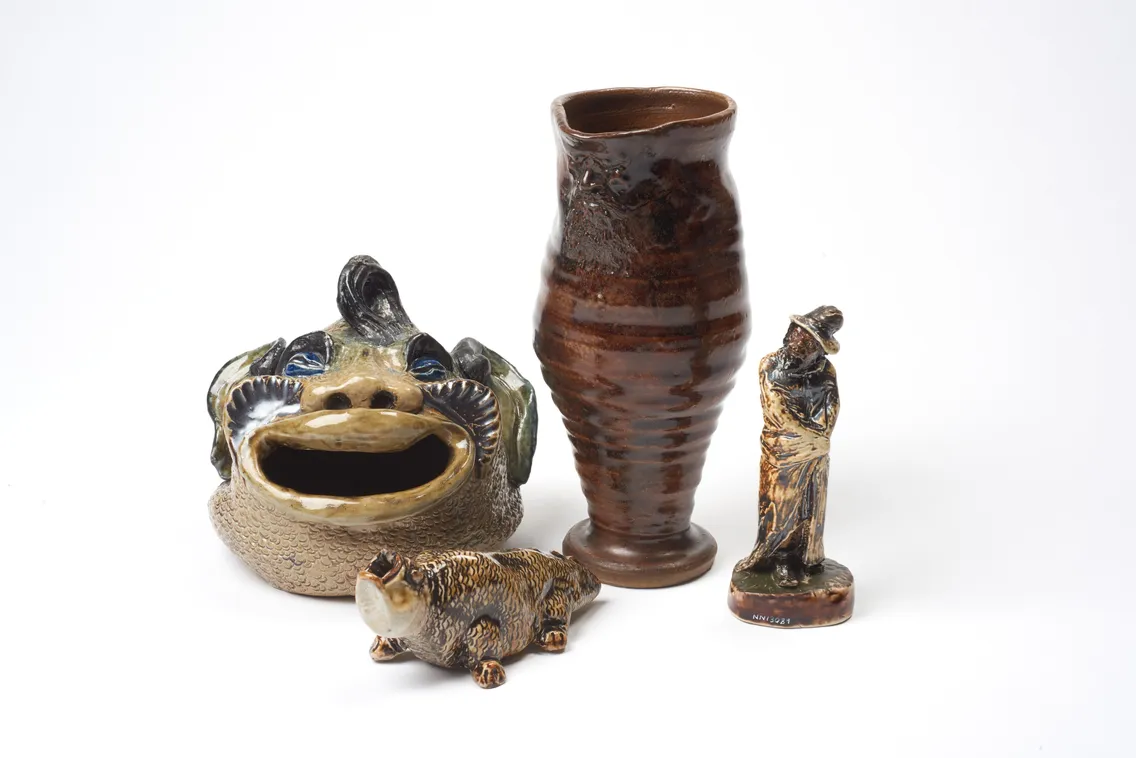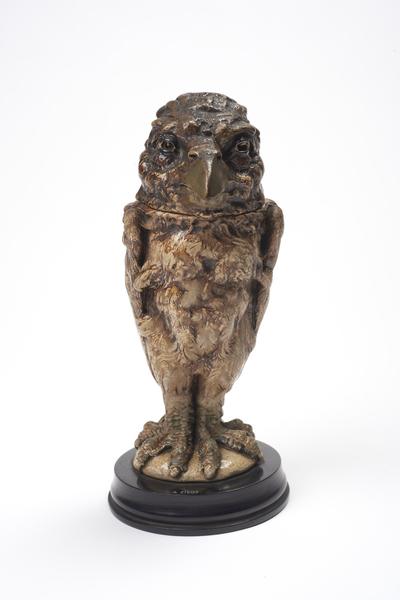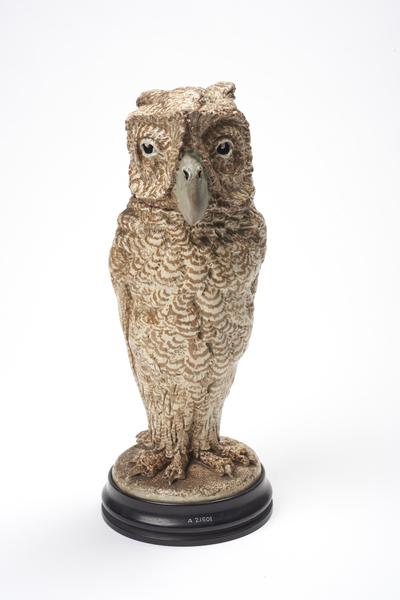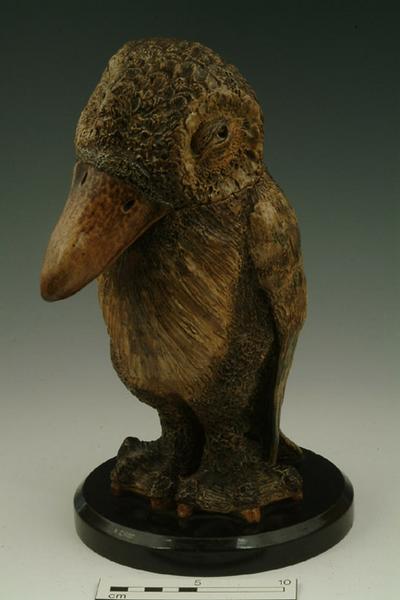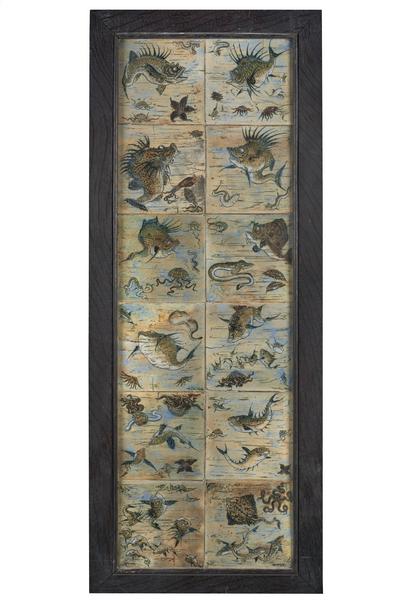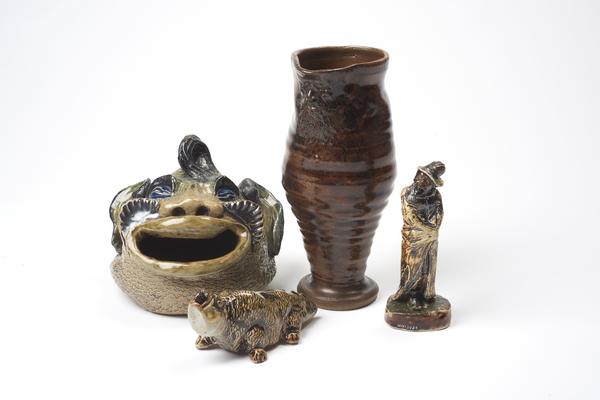The pioneering pottery of the Martin Brothers
From their Southall studio, this firm of four brothers developed a distinct style of pottery art that celebrated the bizarre and the beautiful.
Southall, Ealing
1873–1923
50 years of fauna, flora and fantasy
Founded in 1873 by Robert Wallace Martin, the Martin Brothers built their name on imaginative, ambitious pottery full of colourful characters.
It was a real family affair. Robert was the main sculptor and modeller. His brother Walter supplied the technical knowhow and was the expert on the pottery wheel. The youngest, Edwin, was the thrower and decorator. And Charles managed the shop in Holborn.
At a time where ceramics could increasingly be mass produced, these talented potters championed handmade, unique works of art. Their so-called ‘Martinware’ is considered some of the finest of all Victorian art pottery.
The Southall studio
Robert Wallace started the brothers’ first pottery in Fulham in 1873. In 1877, with business blossoming, they moved into an old soap factory in Southall, near the Grand Union Canal. There, they had the space to build a big workshop and their kiln, an oven that fires (heats) clay into ceramics.

Martin Brothers ceramics were often glazed with subdued colours like browns, greens, greys and blues.
There, the Martins produced salt glazed stoneware, which involves salt being thrown into the kiln during a high-temperature firing. This technique helps to preserve engravings made on the clay. And it creates a uniquely textured glaze, a mixture of matt and glossy. It feels a bit like an orange peel.
They had many artistic influences
Their work drew on inspiration from all over. Many of their jugs, dishes and bowls were influenced by Japanese art and the natural world. These depicted flowers, fish and marine plants.
They also looked to medieval Europe – particularly the bizarre, fantastical creatures called grotesques that were popular in gothic architecture.
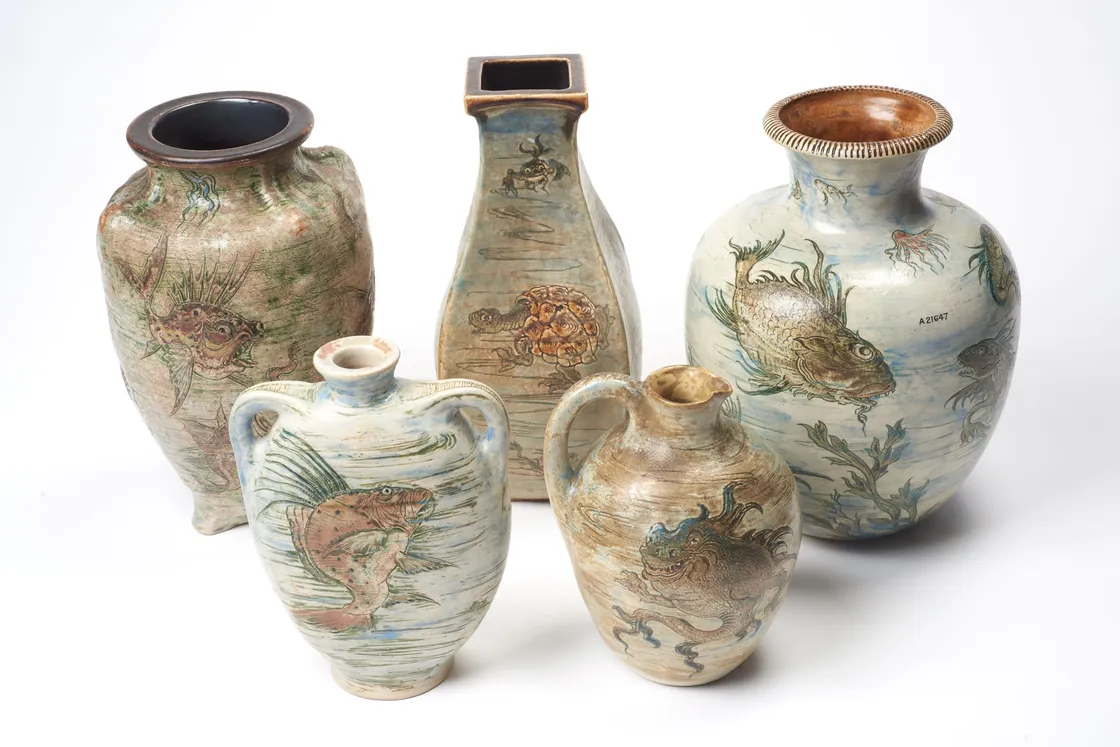
Skilfully decorated aquatic scenes.
Wally Birds and wonky objects
The firm became best known for their grotesque bird jars, known as Wally Birds. Their outsized beaks and distorted human heads were the witty work of Robert, who’d trained as a sculptor at Lambeth School of Art. They’re full of personality and have almost human-like expressions.
They also sold ‘marred’ pots, objects that had distorted on the pottery wheel, but had been fired in the kiln and glazed anyway. They were often inscribed with this quote from The Book of Jeremiah: “And the vessel that he made of clay was marred in the hand of the Potter.”
The Holborn shop
From 1878, Charles ran the sales from their shop on 16 Brownlow Street in Holborn. The dealer Holbrook Jackson described his first visit there in 1910, finding “shelves of stoneware jugs carved into leering, laughing, grinning and ogling heads, jostling with the most impossible, and most fascinating, pot birds with strangely anthropological expressions”.

Two 'marred' pots with the inscription “And the vessel that he made of clay was marred in the hand of the Potter.”
One of the first studio potteries
The Martin Brothers were one of the earliest artist-led pottery studios, predating the British studio ceramics movement that kicked off in the 20th century. They were self reliant and had complete control over their artistic production. They closed in 1923 when Robert, the last of the brothers still alive, passed away.

